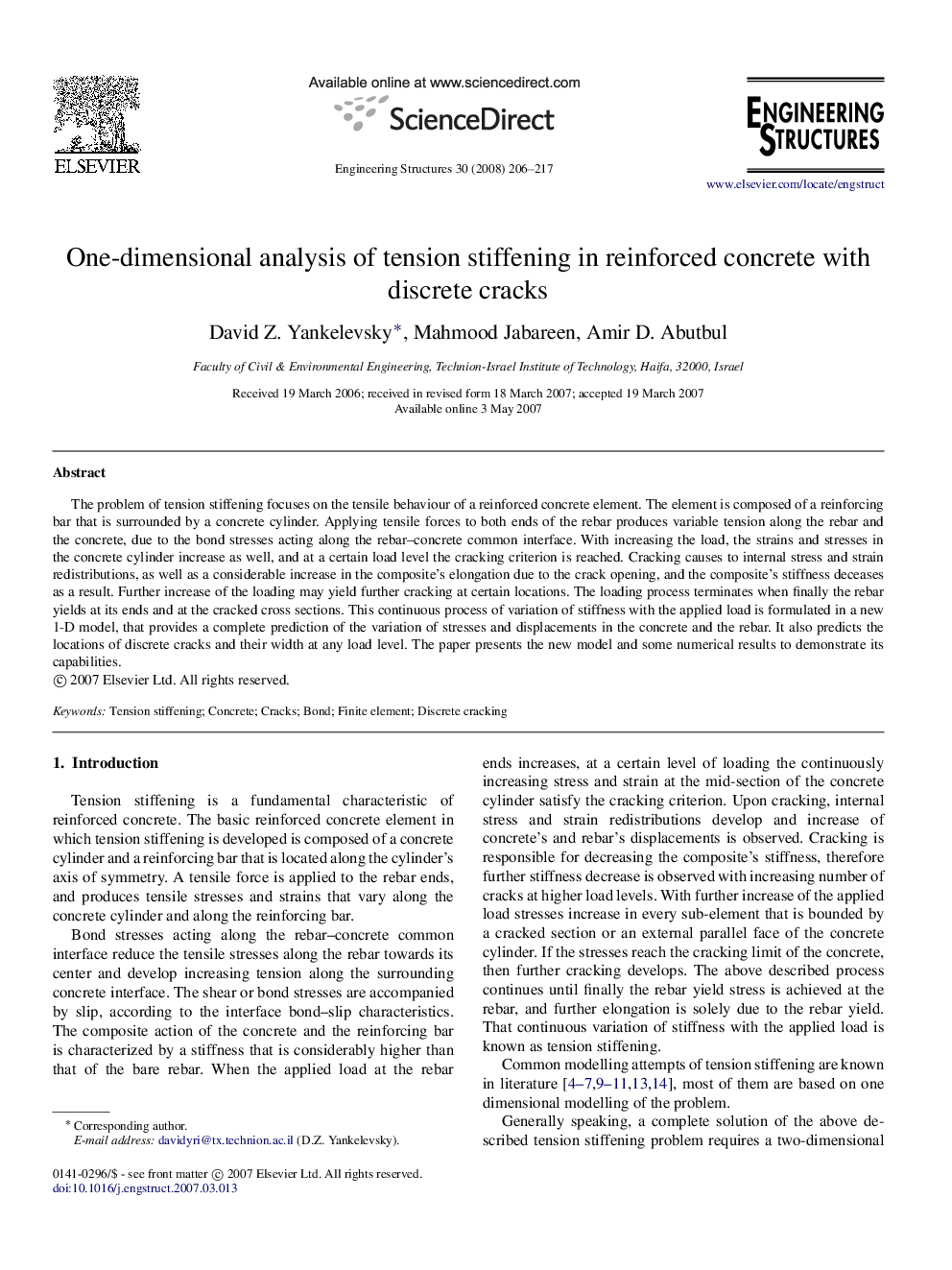| Article ID | Journal | Published Year | Pages | File Type |
|---|---|---|---|---|
| 269331 | Engineering Structures | 2008 | 12 Pages |
The problem of tension stiffening focuses on the tensile behaviour of a reinforced concrete element. The element is composed of a reinforcing bar that is surrounded by a concrete cylinder. Applying tensile forces to both ends of the rebar produces variable tension along the rebar and the concrete, due to the bond stresses acting along the rebar–concrete common interface. With increasing the load, the strains and stresses in the concrete cylinder increase as well, and at a certain load level the cracking criterion is reached. Cracking causes to internal stress and strain redistributions, as well as a considerable increase in the composite’s elongation due to the crack opening, and the composite’s stiffness deceases as a result. Further increase of the loading may yield further cracking at certain locations. The loading process terminates when finally the rebar yields at its ends and at the cracked cross sections. This continuous process of variation of stiffness with the applied load is formulated in a new 1-D model, that provides a complete prediction of the variation of stresses and displacements in the concrete and the rebar. It also predicts the locations of discrete cracks and their width at any load level. The paper presents the new model and some numerical results to demonstrate its capabilities.
